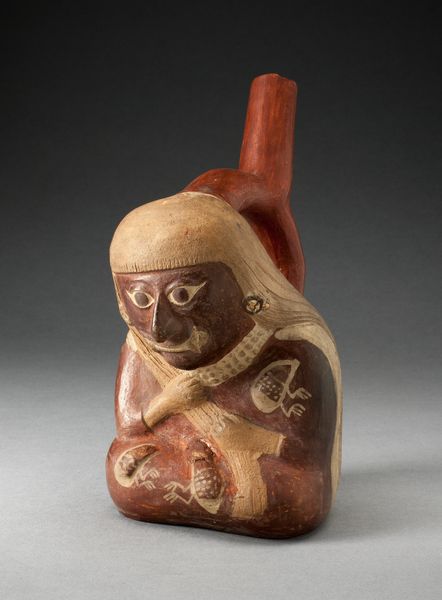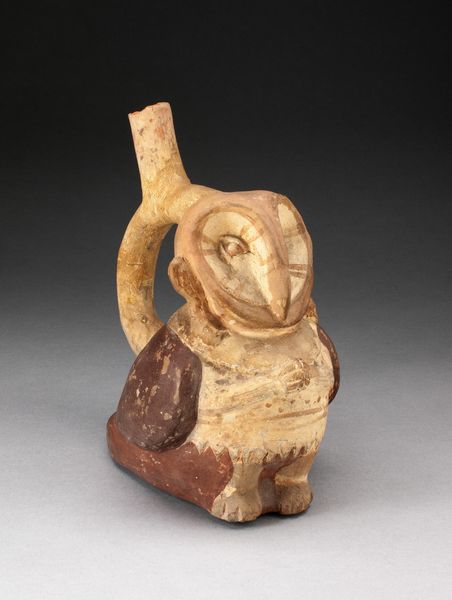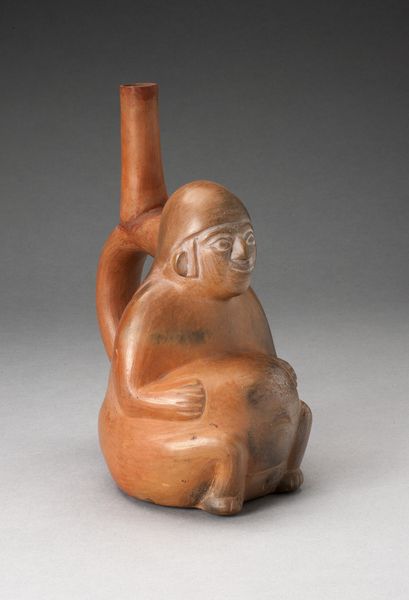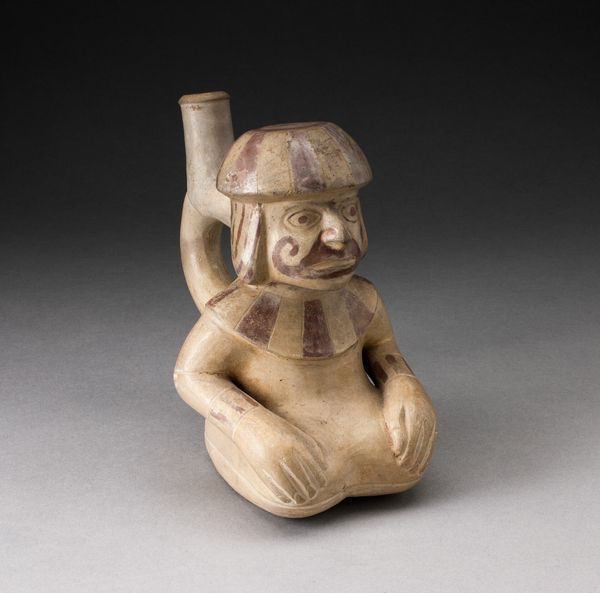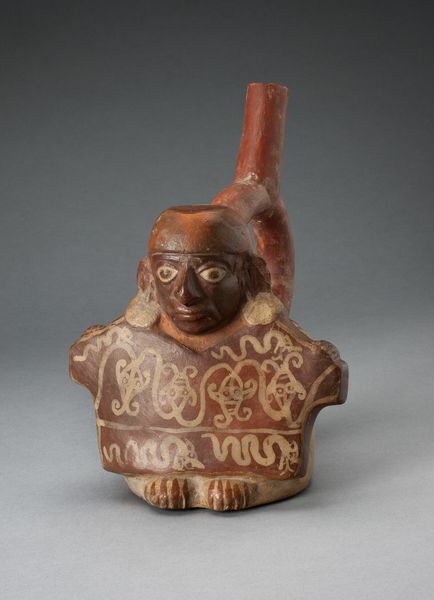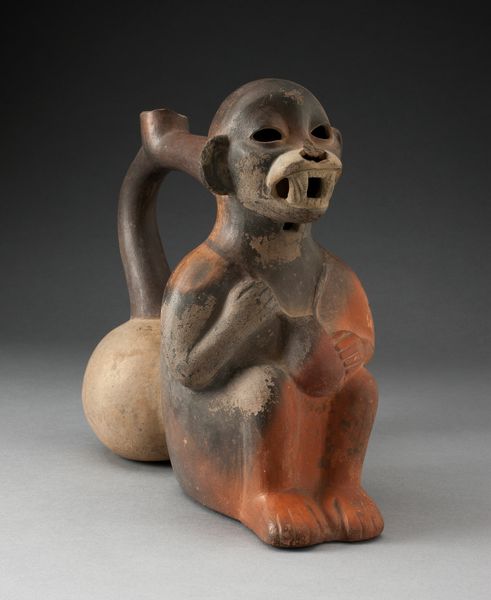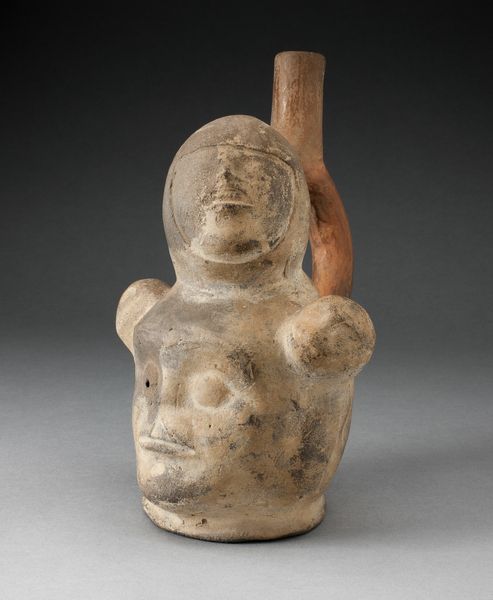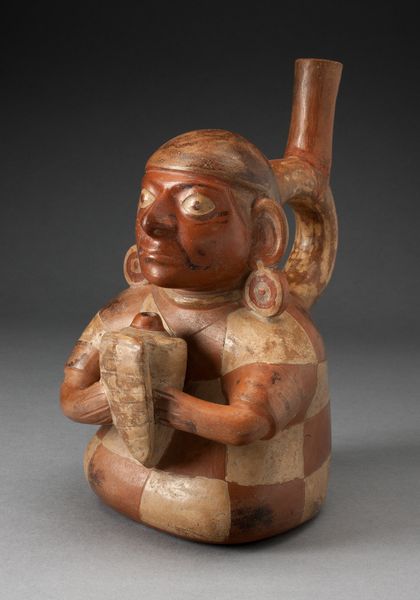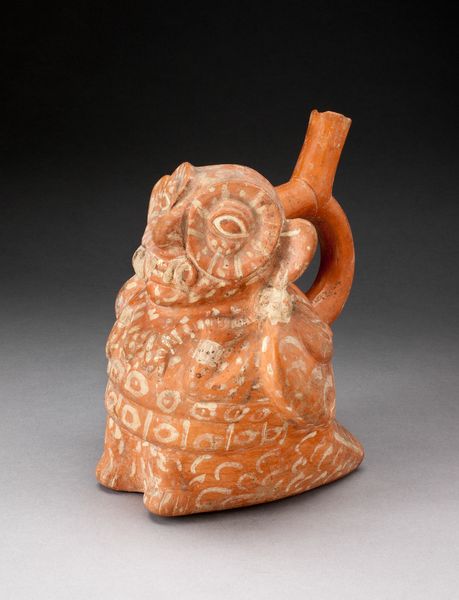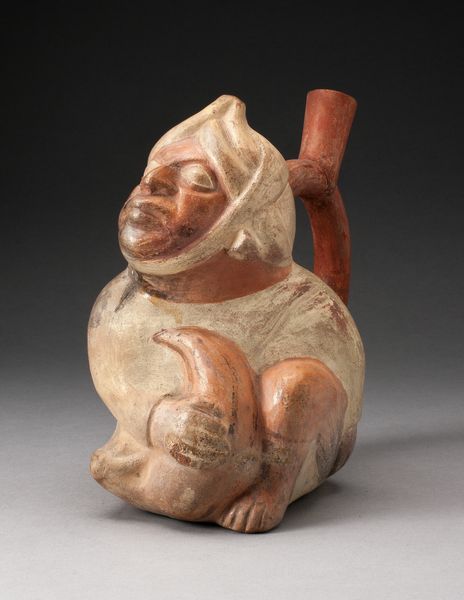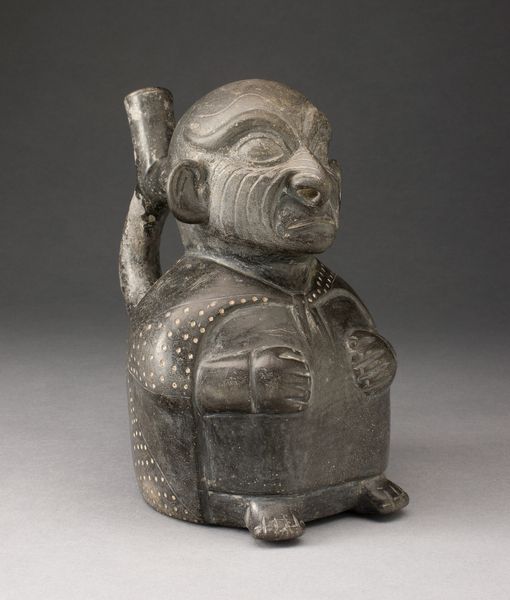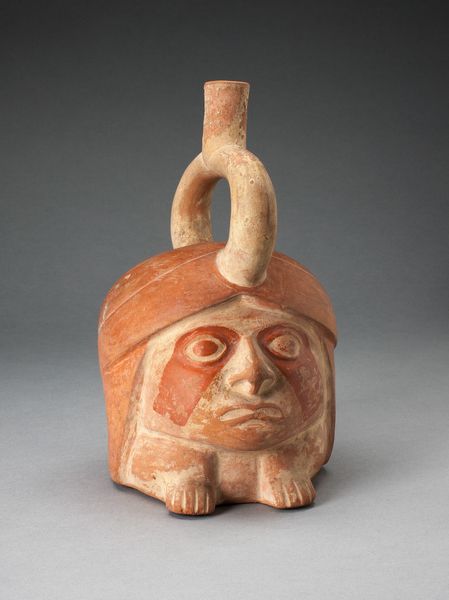
Handle Spout Vessel in the Form of a Woman and Child c. 100 - 500
0:00
0:00
ceramic, sculpture, terracotta
#
portrait
#
sculpture
#
ceramic
#
figuration
#
sculpture
#
terracotta
#
indigenous-americas
Dimensions: 17.5 × 16.5 cm (6 7/8 × 6 1/2 in.)
Copyright: Public Domain
Editor: This is a Moche ceramic vessel, dating from around 100 to 500 CE. What strikes me is how realistically the figures of the woman and child are portrayed. It's surprisingly intimate. What can you tell me about this piece? Curator: Indeed, it's fascinating to consider how this vessel functioned within its socio-cultural context. Vessels like this, particularly those depicting figures, were rarely mere utilitarian objects. Their existence points to complex power structures and belief systems. The woman, likely an elite figure, and child were designed to underscore notions of authority and lineage, reflecting idealized roles that certain segments of society aimed to uphold. Who do you think may have used an object such as this and for what purpose? Editor: So, it was less about pure representation and more about reinforcing societal roles? Perhaps it was reserved for ceremonies or special events, by members of the ruling class. Curator: Precisely. Its use in ceremonies isn't beyond reason as the Moche are well known for their rituals that reflected their society. Furthermore, notice the spout. Its placement doesn’t allow us to fill the vessel without covering the face of the woman and child. Does that tell us anything about who had access to these images, or the degree to which this symbol was deemed ‘sacred?' Editor: That’s an excellent point. The act of obscuring the image by filling it shows that functionality was secondary. Perhaps the significance of who can use the image outweighs everyday considerations. Curator: Precisely! These artifacts offer glimpses into the intricate tapestry of the past, constantly prompting us to reflect on how objects play an active role in defining and perpetuating power dynamics and shaping world views in the past. Editor: I see that now. Thanks to you, I won't be thinking of ancient artifacts the same way. Curator: It's crucial to think of their position within their society when you consider the works, rather than isolating the work and assuming their original position. Thanks for sharing the moment to reflect.
Comments
No comments
Be the first to comment and join the conversation on the ultimate creative platform.
